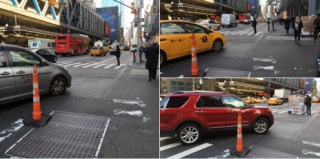
(Images: Brooklyn Spoke)
Here are the bike-related links from around the world that caught our eyes this week:
Instant curb extension: Doug Gordon of Brooklyn Spoke has discovered that a single well-placed traffic cone can create big improvements in car turns.
Escalator capacity: Much like on streets, you can increase throughput on some escalators by removing the passing lane.
Helmet logic: “Despite the fact that car accidents are the number one cause of all fatal head trauma among teenagers, the suggestion that teens wear helmets when they drive is simply brushed off,” observes Howie Chong in a data-rich essay on the helmet decision.
Autocentrism summarized: “The car must not conform to the city,” writes The Stranger in a refreshing summary of the “ideology” that leads people to blame distracted pedestrians for their own deaths. “The city must conform to the car.”
Missing bikes: Paris drained a canal and found 100 Velib bikeshare bikes.
Activity promotion: An English ad campaign called “This Girl Can” led an estimated 2.8 million women aged 14 to 40 to do “some or more” physical activity.
Trail sabotage: A 64-year-old woman in Vancouver, BC, got three years’ probation for dragging logs across mountain bike trails.
Red-light running: 94 percent of drivers say it’s unacceptable but 36 percent admit they’ve done so in the last 30 days.
Rolling stops: As promised, San Francisco Mayor Ed Lee vetoed a de facto legalization of stop-signs-as-yield-signs.
Sharrows fail: They did nothing for Chicago streets that didn’t also get traffic calming.
Advertisement
Indian carsharing: “When people own cars, they end up using them all the time,” says Shreya Gadepalli about trends in increasingly car-filled Chennai, India. “However, with good taxi and car sharing services, people tend to live car-free lives. They start walking, cycling and using public transportation more since taxis or shared cars are always available when the need for a car arises.”
Suburban main street: Vancouver’s Felida neighborhood just got a new strip of sidewalk-facing two-story buildings inspired by a developer’s trip to Europe.
Car rationing: Dehli’s two-week test of odd/even car rationing “now seems like a two week holiday” from chronic congestion, reports the BBC.
Vision Zero: Volvo has promised zero fatalities from the cars it sells after 2020.
Civilization’s price: “We are not paying taxes,” writes the Danish Meik Wiking in a summary of why his country is among the world’s most taxed and most happy. “We are purchasing quality of life.”
Bus priority: Copenhagen is testing sidewalk LEDs to indicate the points when people boarding buses have priority over passing bikes.
2015 traffic: The hottest year in modern history will also probably be the one with the most car miles driven.
I-5 bridge: Two legislators in Clark County, Wash., are once again looking to restart conversation about replacement.
Segregation now: The more power a city gives to neighborhood groups, the more likely it is to segregate by income.
If you come across a noteworthy story, send it in via email, Tweet @bikeportland, or whatever else and we’ll consider adding it to next Monday’s roundup.
— Michael Andersen, (503) 333-7824 – michael@bikeportland.org
BikePortland can’t survive without paid subscribers. Sign up in January and get a $20 Bike Gallery gift card.

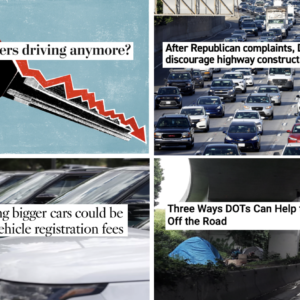
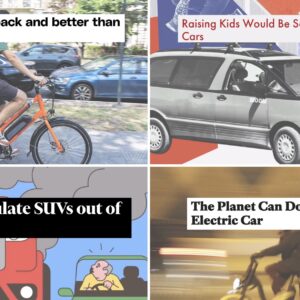
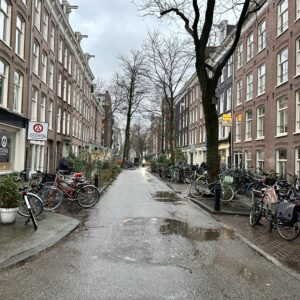
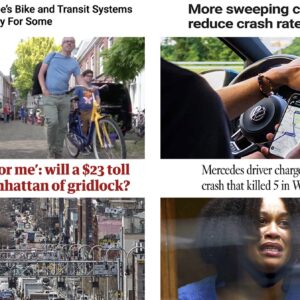
Thanks for reading.
BikePortland has served this community with independent community journalism since 2005. We rely on subscriptions from readers like you to survive. Your financial support is vital in keeping this valuable resource alive and well.
Please subscribe today to strengthen and expand our work.
The Copenhagen idea for an LED signal in the road surface is brilliant: forward-thinking solutions using new technologies. While not dirt-cheap to install, these signals would be simpler and cheaper than big tearouts and rebuilds.
Sometimes a city’s existing infrastructure (I notice even CPH has some paint-stripe bike lanes) just isn’t up for total replacement. While we argue for the “perfect” and live every day with the pretty-damn-bad here in Portland, innovative ideas like this could provide some real good.
Plus, it would look really cool!
On red-light running:
Holy frackin’ frack! How much common sense can be captured in a single FAQ? Are rights on red dangerous? YEP. Would an extra second of amber reduce red light running? YEP. Do red light cameras make a huge difference in reducing injuries? YEP. Are roundabouts safer than signalized intersections? YEP.
Do we do any of these? NOPE. We bust bicyclists for rolling stops, though. Keepin’ it safe, yo.
> We bust bicyclists for rolling stops, though
What share of traffic citations in Portland are given out to cyclists? To pedestrians?
The Share the Road Safety Class taught in Portland (To people driving, riding, walking…) has had (I believe) 45,000 people go through the class and has had (I believe) about 17% attended by people who were on bike when they were given their citation.
So it appears that people cycling are disproportionately targeted by law enforcement. Why am I not surprised.
Proportionately, people biking, may run stop signs more than people driving do. From a bikeportland story years ago, I remember report of numbers from one of the Ladd’s Addition stop sign enforcement details showing this to be the case: a greater number of people biking, rolled or blew the stop signs, than did people driving motor vehicles.
Not all moving violations are eligible to take the class. I think speeding, wreckless driving, drunk driving, and other moving violations are ineligible. So those would mostly be motor vehicle users.
How many “enforcement actions” have been done to bust drivers making right turns on red without coming to a complete stop (in front of the crosswalk) first? For drivers using the bike lane as a passing or right turn lane? For drivers passing aggressively or too closely to bicyclists? (OK, there actually was an “educational outreach and enforcement action” on Clinton recently for drivers who were acting aggressively).
I don’t think relative volume of citations is the most telling statistic here. What exposes a jurisdiction’s priorities is where they choose to concentrate resources, and what they choose to focus on, regardless of whether any citations are issued.
Goodness gracious…let the Columbia crossing die the death it deserves.
We can’t be surprised that they want to “start a conversation”. Of course they want the rest of us to subsidize their ridiculous lifestyle choices. If you don’t want to sit in traffic, don’t live 40 miles from work in another state.
But then they would have to pay income taxes to support the infrastructure they are degrading. Is that really fair?
40 miles away? Everyone is commuting in from Woodland now???
Woodland is only 21 miles away.
One of the bridges is 100 years old. If dying the death it deserves is to die of old age, it is just about there. The interstate crossing will be replaced.
And the adjacent rail bridge is even older, and has no alternate route. Why aren’t we hearing concerns from anyone about that?
98 years old. Which is younger than the Steel, Broadway, Hawthorne, BNSF 5.1 and the Interstate RR bridge.
Those bridges have a fraction of the daily loadings.
“…The interstate crossing will be replaced.” Granpa
Because the bridge isn’t just a state to state commuter bridge, but also a major interstate highway crossing bridge…it most likely will be replaced eventually. Re-evaluation of the differing functional priorities people have for this crossing could be one of the best things to be gained from continued discussion about a new bridge at this crossing.
For the purpose of enabling sprawl by way of increases in daily state to state commute trips by personal car, a new bridge would be self defeating. For improved mass transit, walking and bike travel, and improved freight transport, plus improved structural integrity, investment in a new bridge could make good sense.
Have you seen how KGW has been resurrecting it’s past coverage on the matter? All through the month of December they were re-cycling old stories on it, pushing them back up to front page, or putting links to them on the front page.
Segregation now: The more power a city gives to neighborhood groups, the more likely it is to segregate by income.
Richard Florida’s piece on the Lens and Monkkonen study is more informative:
http://www.citylab.com/housing/2016/01/how-zoning-restrictions-make-segregation-worse/422352/
Portland’s neighborhood association system is not only anti-democratic but it is, IMO, a major driving force behind Portland’s awful legacy of socioeconomic discrimination and displacement.
The conclusion seems anecdotal. Housing has always segregated by income. These groups may be working to perpetuate the status quo, but they didn’t create the situation.
For example… say you’re a developer that wants to build some million dollar condos in Portland. Where are you going to build them? They’re going downtown. Because a) that’s where they can sell them b) that’s where they can get zoning approval c) That’s where the residents wouldn’t fight it tooth and nail.
So, is it the developer the city or the neighborhood that’s “forcing” this?
Calling these conclusions anecdotal is strange considering they are based on a large study recently published in JAPA:
http://www.tandfonline.com/doi/pdf/10.1080/01944363.2015.1111163#.VqafVHUrL8s
The Interstate Bridge duo will need replacing at some point, with a more structurally-sound bridge. The northbound bridge in particular is edging close to being rated “deficient” rather than simply obsolete. I can understand opposition to a new bridge with a pointless number of lanes, but opposing any new bridge because cars sounds more like a stance grounded in ideological extremism than in practicality.
As far as the “ridiculous lifestyle choices” of Vancouverites go, a lot of people live in Vancouver because it’s less expensive than Portland, but they continue to work in Portland and pay Oregon income taxes. Is that a lifestyle choice that you’d punish?
Plus, the bridges carry a lot of commercial traffic, which supports all of our lifestyle choices, ridiculous or not.
The new eventual bridge must have transit (like MAX) and solid human-power space. Wasn’t transit a sticking point last time?
Yes, they will need to replace the bridges at some point, but the project needs to be majorly downsized, and tolls will have to be part of the financing. They should re-purpose the newer of the two existing spans for light rail, pedestrians, and emergency local access for Hayden island from the north. A new 8-lane freeway span would then be built just east of the existing span. Closing the exits on Hayden Island and re-using the existing bridge from Hayden to the Oregon side (already 8 lanes), and a new local access bridge to the south.
The majority of the projected CRC costs were due to freeway widening and interchanges. The plan listed above could be done for less than $2 billion, including the light rail costs.
FSD,
The current bridges are already functionally deficient for a freeway bridge. You’ll notice that more recent bridges have 10-12 ft shoulders for break-downs to move off the travel lanes, and when a significant crossing of a natural barrier, include adequate pedestrian facilities for 2-way travel, with wide areas for wheelchairs to pass at least every 200 feet. Then there is travel lane width.
Replacing an aging bridge is fine, and will be necessary at some point. However, using bridge replacement as an excuse to gut the center of Portland and replace it with a mega-freeway is so not fine that I can’t come up with the words to describe how not fine it is. Save us all from project creep.
“In a letter sent to the Board of Supervisors Tuesday, Lee said the bill “does not promote balanced public safety for all the diverse users of our streets, rather, it trades safety for convenience.””
Oh, you mean like slip lanes and legalizing right turns on red lights?
Sharrows suit communities that want to do the absolute minimum to accommodate bikes, while still allowing them to take some credit for bike infrastructure. A stencil & some paint, and there you go – instant bike friendly!
And yet, Washington County has a plan for adding sharrows at some point but can’t find the money to do it. Too busy spending money on things like TV Hwy Widening Project.
..And yet they are the by far statistically the safest and among the most used bicycle infrastructure in Portland.
they were already that way before sharrows…
I was riding on a road just today with recently added sharrow markings. An impatient motorist behind me noticeably calmed down after we rolled over the first of the markings. They may or may not improve safety, but they seem to play a positive role in belligerence reduction.
What is it sharrows are supposed to do? Does the sharrow stencil on the main lane of a road, supersede Oregon laws pertaining to people riding bikes, and if so, which laws? For example, does a sharrow mean that someone riding a bike at 12 mph, is not required by law to move close to the right side of the road if reasonably possible, to allow faster traffic to pass on a 30 mph posted road?
Maybe there are some of these sharrow stencils on Washington County or Beaverton road, but I’ve not seen them, so I’ve not had an opportunity to see what effect they may have on use of vehicles on the road.
Instant curb extension: The Portland Department of Transformation retweeted the same 3 weeks ago…
https://twitter.com/BrooklynSpoke/status/683375132308598784
The article by Howie Chong is interesting but has some factual errors. He references the infamous intentionally fraudulent study from 1989 which made the (wrong) claim of 85% reduction in head injuries, he then goes on and says (wrongly) that it is backed up by “study after study”. We know that no other study has ever come to the same conclusion.
This is odd that an article in 2014 would still be repeating a then 27 year old lie. He should be corrected.